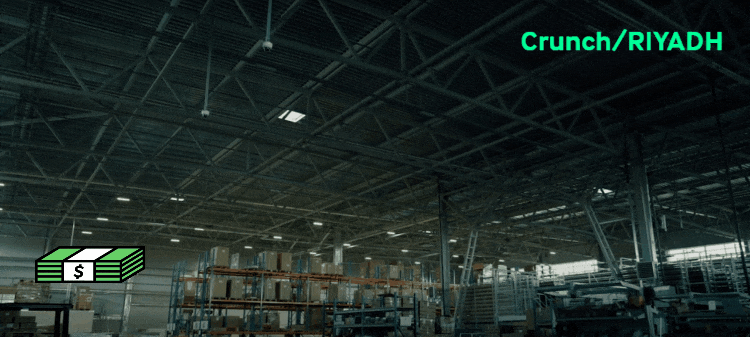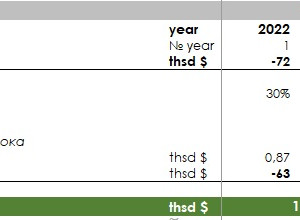The Saudi Arabian warehousing market
The Saudi Arabian warehousing market has experienced steady growth over recent years, driven by the expansion of industrial and retail sectors. With major cities like Jeddah, Riyadh, and Dammam leading the charge, the demand for port storage facilities for dried products continues to rise. This article explores the current state of the market, the challenges it faces, and the opportunities that lie ahead.
Why Saudi Arabia’s Dry Warehousing Market is Booming
The warehousing sector in Saudi Arabia has seen remarkable growth, with a 2.8 percent increase from 2015 to 2020 and projections indicating continued expansion until at least 2025. This growth is largely fueled by the booming industrial and retail sectors. As Saudi Arabia seeks to diversify its economy, the logistics and warehousing sectors have become critical components of this transformation. This article delves into the specifics of the market, highlighting the key cities driving this growth and the challenges that need to be addressed.
The Major Players: Jeddah, Riyadh, and Dammam

Jeddah, a bustling port city on the Red Sea, plays a pivotal role in Saudi Arabia’s warehousing landscape. The city’s proximity to the Jeddah Islamic Port makes it a strategic location for warehousing and logistics operations. The warehousing district here spans an impressive 26.1 million square meters, making it a significant contributor to the country’s logistics capabilities.
Riyadh: The Central Powerhouse
As the capital and main financial hub, Riyadh is central to Saudi Arabia’s warehousing infrastructure. Located in the heart of the country, Riyadh’s warehousing districts are primarily near the city’s dry port. With 24.5 million square meters dedicated to warehousing and logistics parks, Riyadh is a crucial player in meeting the nation’s storage needs.
Dammam: The Eastern Gateway
Situated on the Persian Gulf, Dammam’s strategic location makes it a key player in Saudi Arabia’s warehousing sector. The city’s logistics parks are spread across four zones, utilizing 20.9 million square meters for warehousing. Dammam’s port facilities and proximity to other Gulf Cooperation Council (GCC) countries enhance its importance in the regional supply chain.
Identifying Key Challenges in Saudi Arabian Warehousing
Despite the extensive warehousing infrastructure, the rapid growth of the retail sector, increased manufacturing activity, and expanding international trade have outpaced the current capacity. The 72 million square meters of warehousing and logistics space across Riyadh, Jeddah, and Dammam are no longer sufficient, necessitating further expansion.
Beyond Dry Goods: The Rise of Cold Storage
While the focus has traditionally been on dry goods, there is a growing demand for cold storage facilities. A report by Research and Markets projects Saudi Arabia’s cold storage market to reach $2.5 billion by 2024. This trend indicates a diversification in warehousing needs, driven by the increasing demand for perishable goods storage.
The E-commerce Explosion

The e-commerce sector in Saudi Arabia has seen explosive growth, particularly during the COVID-19 pandemic. In March and April 2020 alone, e-commerce activity surged by 74 percent. This rapid growth has put immense pressure on the warehousing sector to provide more space and state-of-the-art facilities to meet the demands of online retailers like Namshi and Amazon.
Geographic and Climatic Challenges
The physical locations of current warehousing facilities pose logistical challenges. The varied, rugged topography and extreme temperatures across the country make it difficult to move goods efficiently between the main logistics hubs. Additionally, the sprawling nature of urban centers in Saudi Arabia limits distribution efficiency from warehouses to customers.
Labor Shortages and Automation Needs
Another significant challenge is the shortage of skilled labor to manage and operate warehousing facilities. As the demand for warehousing space grows, so does the need for a capable workforce. This has led some logistics providers to seek ways to operate their facilities with minimal staff, often turning to automation and advanced technologies to bridge the gap.
Aging Infrastructure

Many of the existing warehousing structures, particularly in Riyadh, are outdated and in need of modernization. These aging facilities are less equipped to handle the demands of a modern supply chain, often leading to inefficiencies and delays. Upgrading these warehouses is essential for Saudi Arabia to remain competitive in the global market.
Opportunities for Growth and Modernization
To keep up with the growing demand, Saudi Arabia must continue to expand its warehousing capacity. This includes building new facilities and expanding existing ones in strategic locations. Investments in infrastructure will be crucial to support this expansion and ensure the efficient movement of goods.
Embracing Automation and Technology
The adoption of automation and advanced technologies can significantly improve the efficiency of warehousing operations. Automated storage and retrieval systems (AS/RS), robotics, and advanced inventory management systems can help overcome labor shortages and enhance productivity. By investing in these technologies, Saudi Arabia can modernize its warehousing sector and meet the demands of the future.
Developing Cold Storage Facilities
With the rising demand for perishable goods, developing more cold storage facilities is a priority. This will not only cater to the growing domestic market but also position Saudi Arabia as a key player in the regional cold chain logistics sector. Investments in this area will be essential to support the country’s diversification efforts.
Enhancing E-commerce Logistics
To support the booming e-commerce sector, Saudi Arabia needs to develop specialized warehousing solutions. This includes creating fulfillment centers that are designed to handle the unique requirements of online retail, such as fast shipping, efficient order processing, and seamless returns management.
Addressing Geographic and Climatic Challenges
Innovative solutions are needed to overcome the geographic and climatic challenges in Saudi Arabia. This could involve developing more resilient infrastructure, optimizing transportation routes, and investing in climate-controlled storage solutions. By addressing these challenges, the country can ensure the smooth flow of goods across its supply chain.
One of such companies is the Citilink group of companies: pioneers of warehouse solutions
The Citilink group of companies specializes in transport solutions, offering a wide range of services to meet a variety of logistics needs. Focused on innovation, Citylink provides express delivery, freight forwarding and tracking services. The company operates a network of trucks, secure terminals and partners with external suppliers to tailor solutions to changing supply chain requirements. In addition, Citylink is committed to health and safety standards, especially in response to global challenges such as the COVID-19 pandemic. Its services are designed to support the goals of the Kingdom of Saudi Arabia’s Vision 2030, focusing on efficiency and customer satisfaction in the transport sector.
Dry storage
Citylink dry warehouses are equipped with 24-hour security and meet strict fire and safety standards, ensuring the safety and security of your inventory. Professional teams on site sort materials and consolidate cargo, optimizing operating costs. The company offers several storage options, including controlled storage, bulk storage, shelf and container storage, and conventional rack storage, all available in a variety of sizes to meet specific needs.
Cold storage
Through a network of international and national partners, Citylink provides extensive cold storage facilities strategically located from the country’s interior to ports spanning the Middle East and Asia. These facilities are managed using advanced warehouse management systems to ensure optimal integrity of your product mix.
Container storage
Citylink’s proximity to seaports and flexible transport network allow the company to offer effective solutions for storing containers. These capabilities ensure containers move seamlessly at every stage of the transport chain, delivering on promises through superior customer service and professional ground staff managing changing inventory levels.
The Future of Warehousing in Saudi Arabia
The warehousing sector in Saudi Arabia is poised for continued growth, driven by the expansion of the industrial and retail sectors, the rise of e-commerce, and the increasing demand for cold storage. However, to fully capitalize on these opportunities, the country must address the challenges of space shortages, aging infrastructure, and labor shortages. By investing in modern facilities, embracing automation, and expanding capacity, Saudi Arabia can position itself as a leader in the regional and global warehousing market.
As the warehousing sector evolves, businesses must stay informed and proactive. Investing in state-of-the-art facilities and technologies will be crucial for success in this dynamic market. Stay ahead of the curve by exploring our comprehensive guide on warehousing solutions and discover how you can optimize your logistics operations for the future.
June 23, 2024















